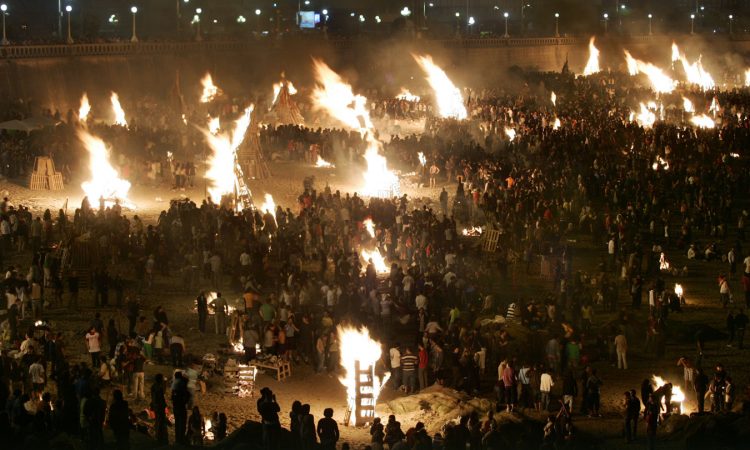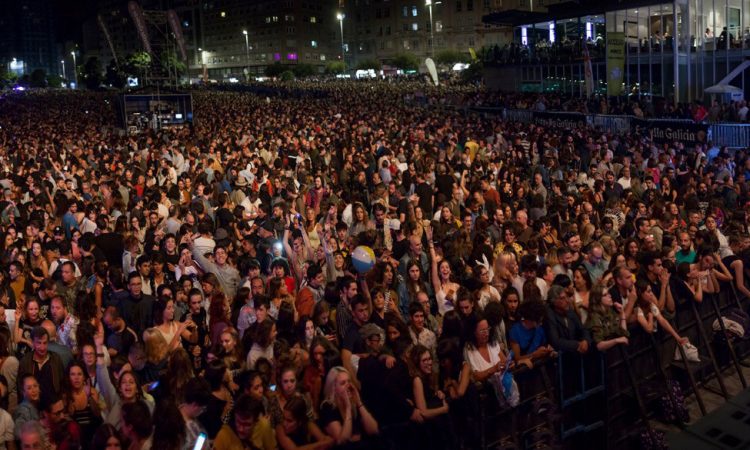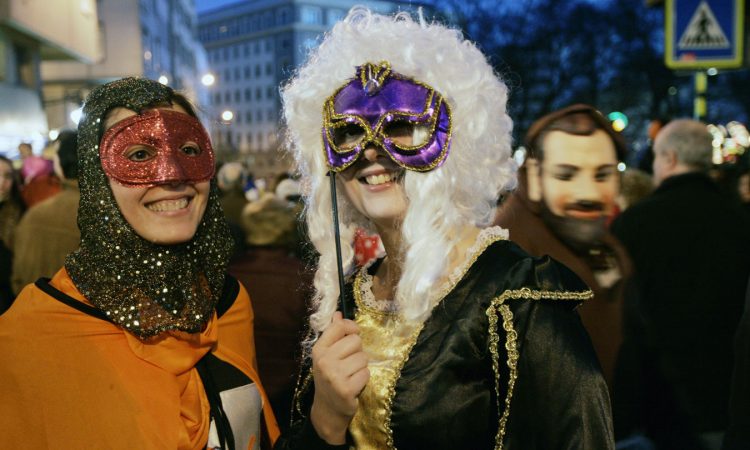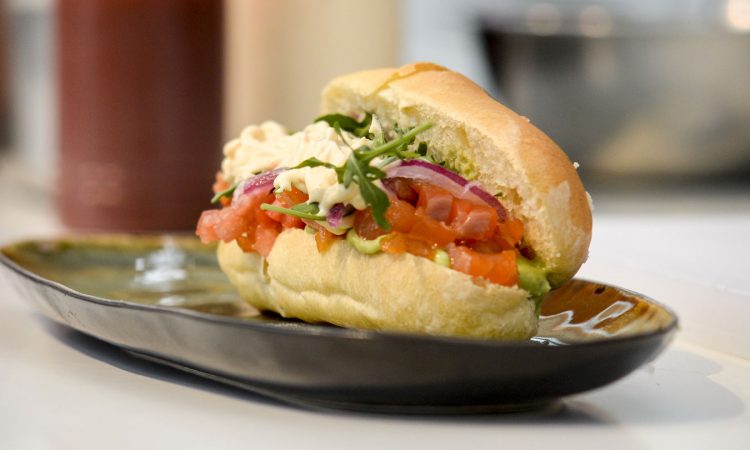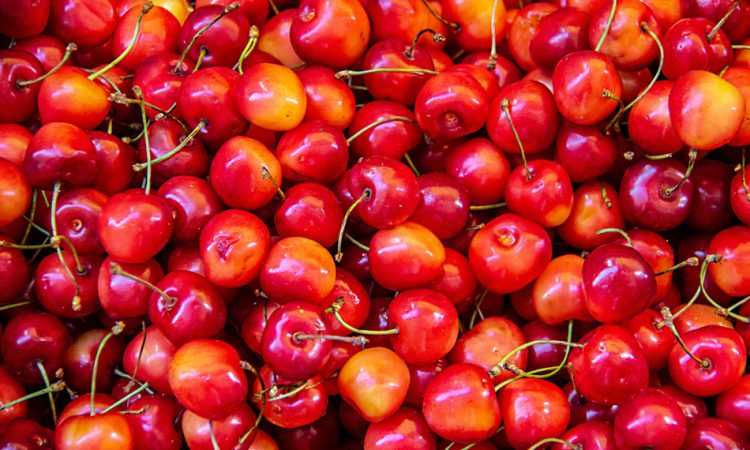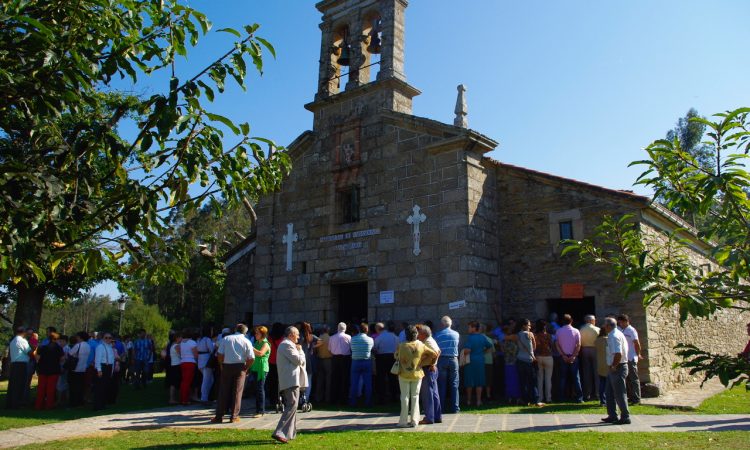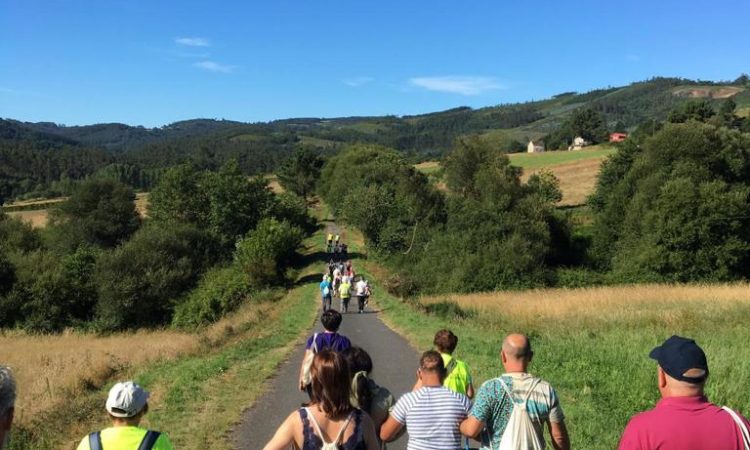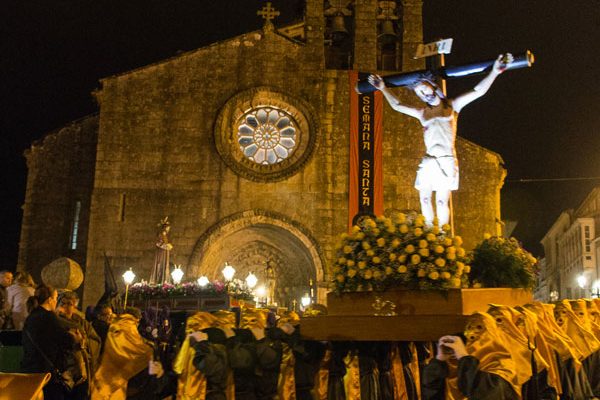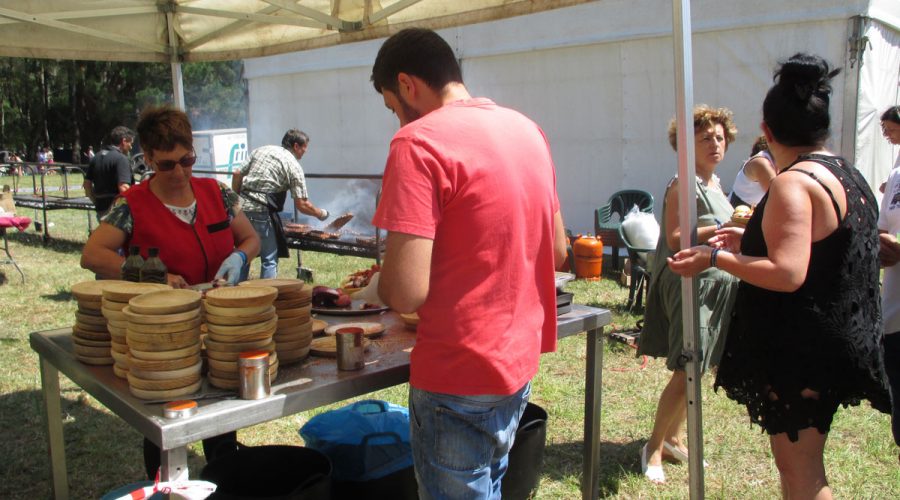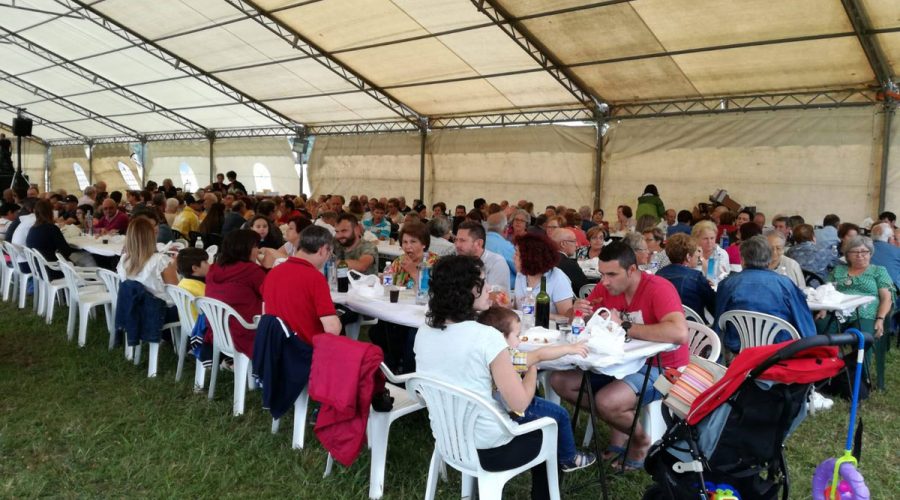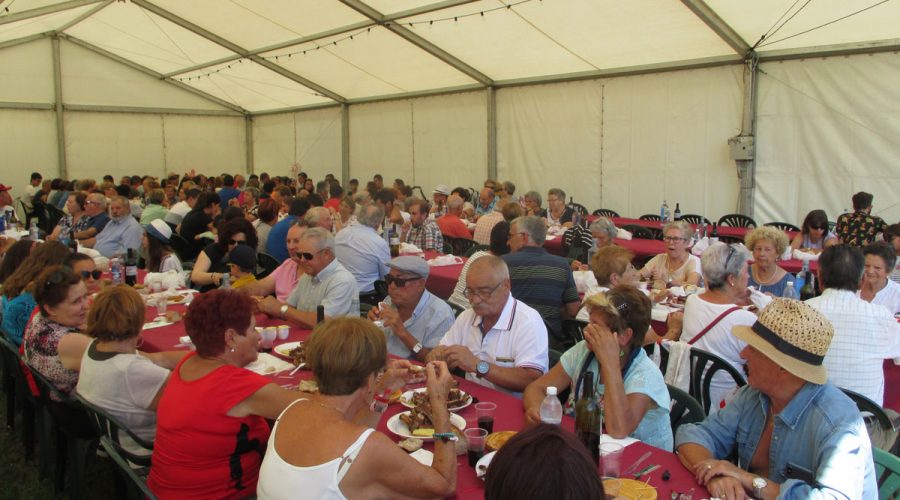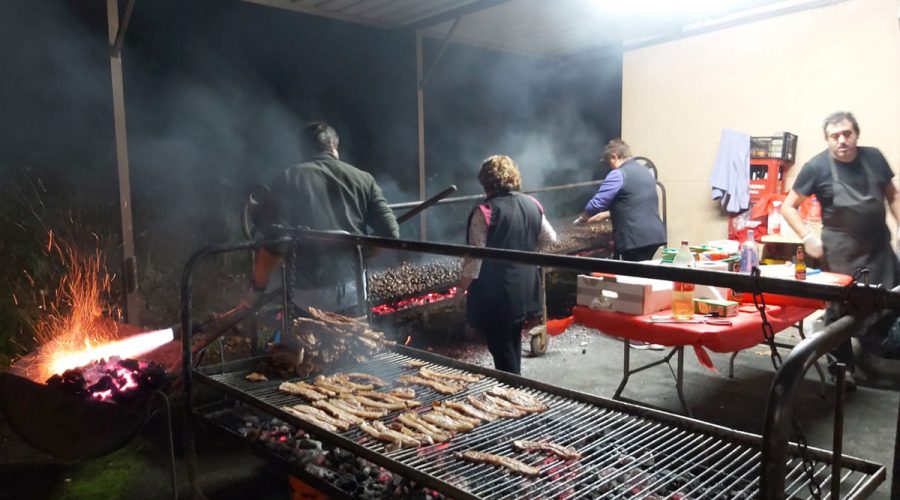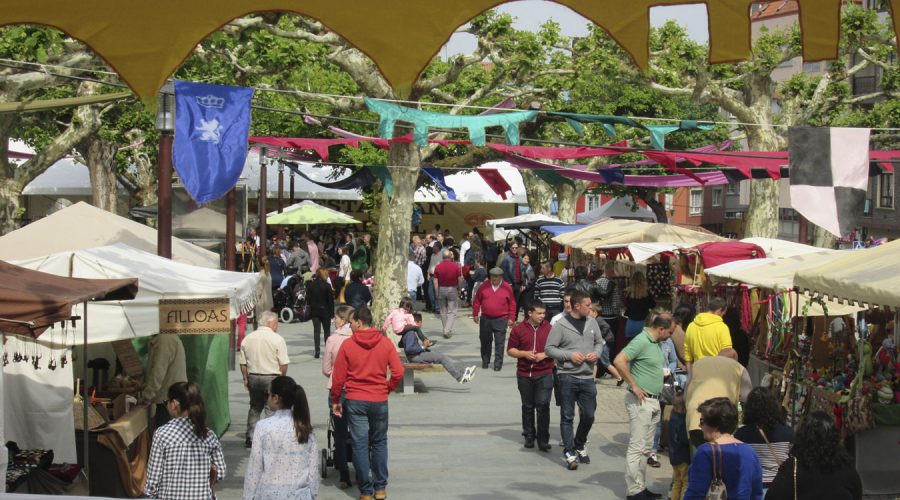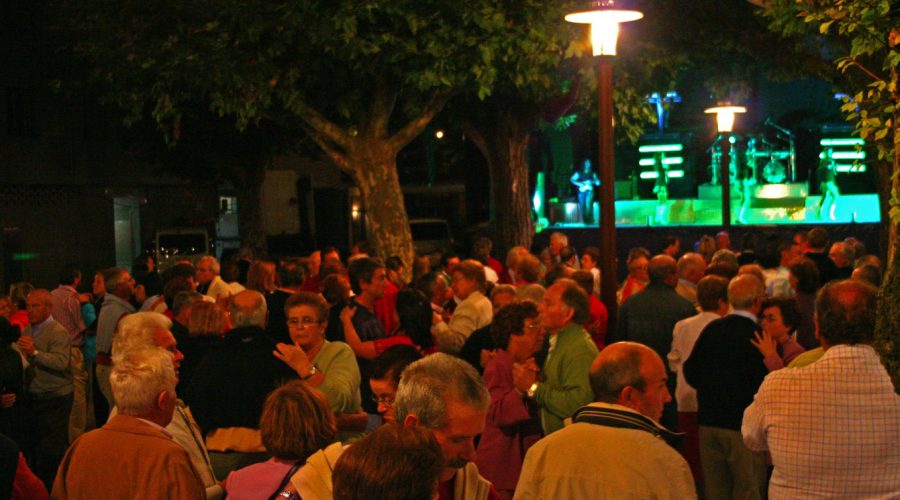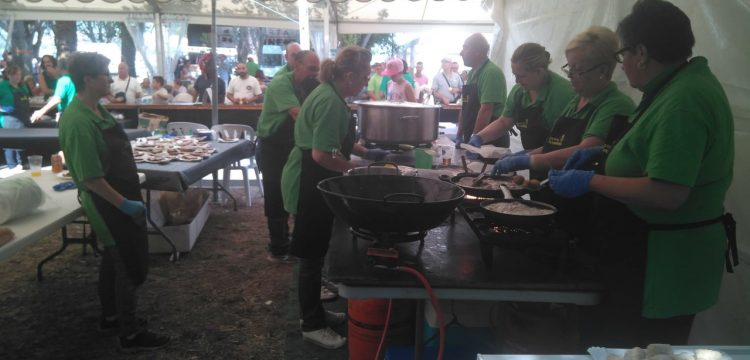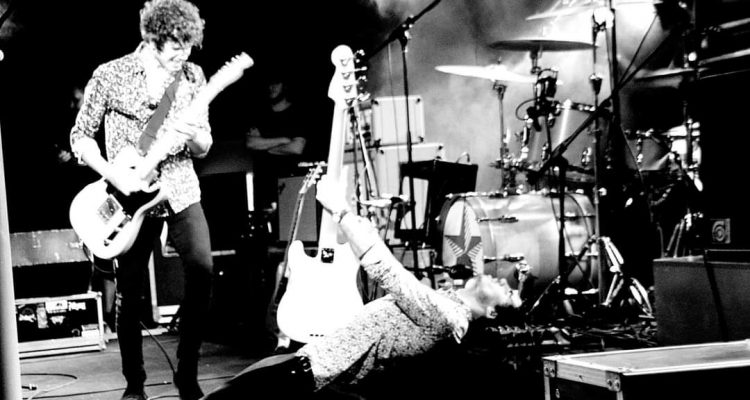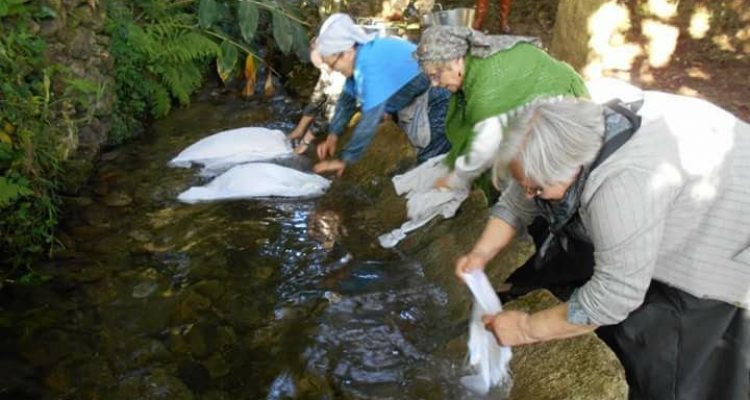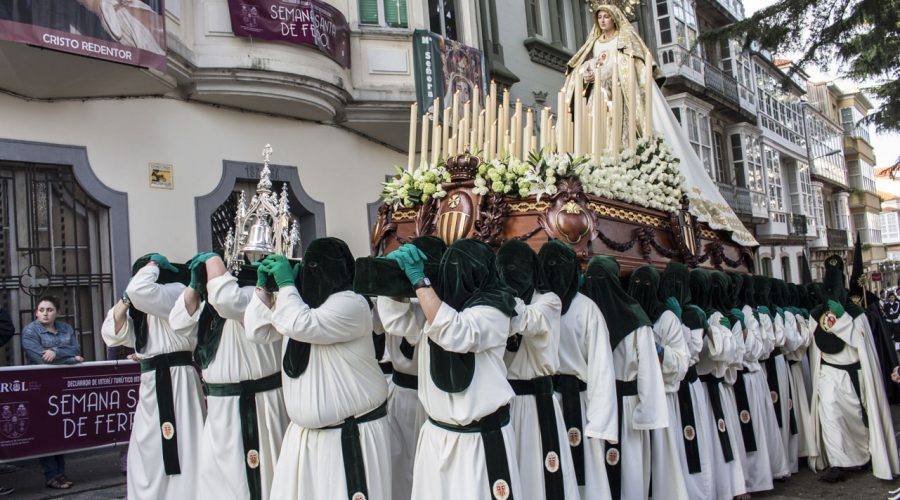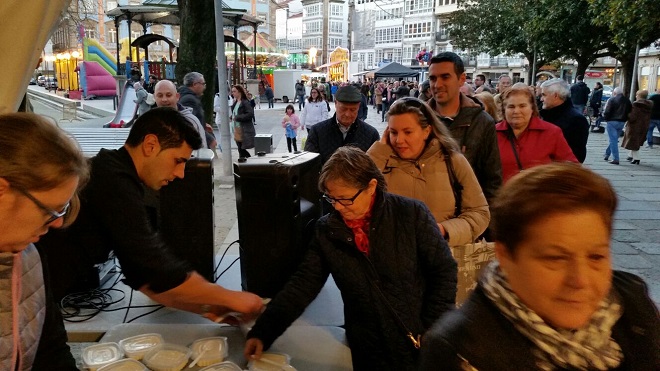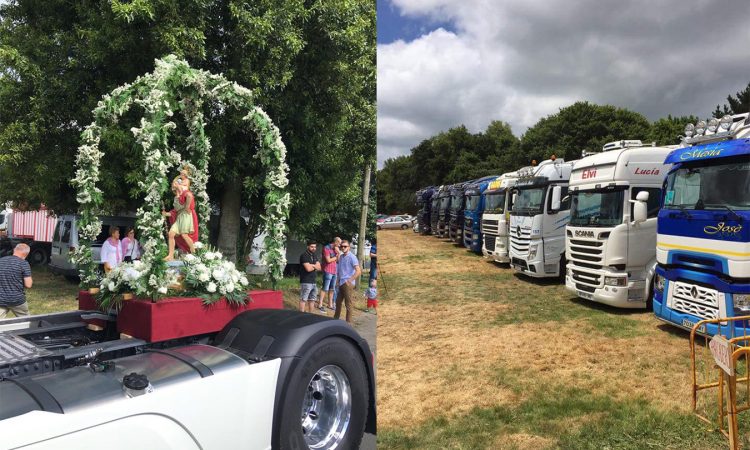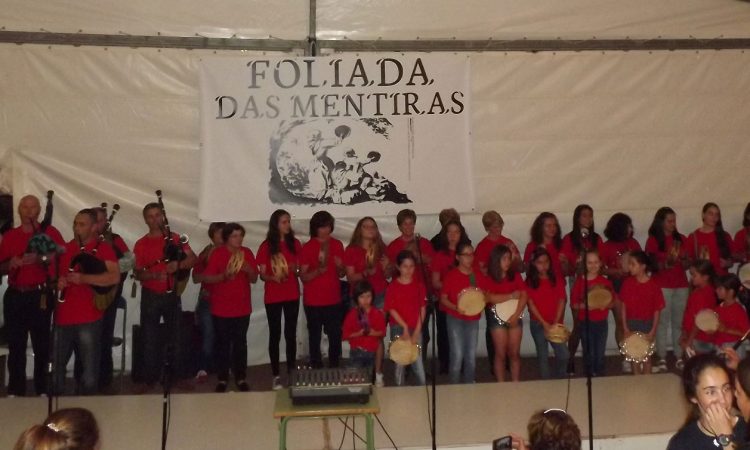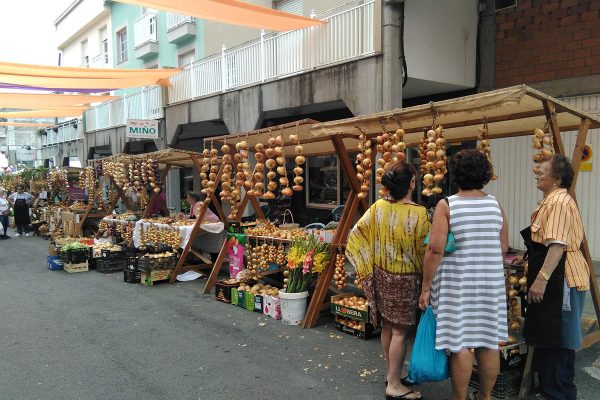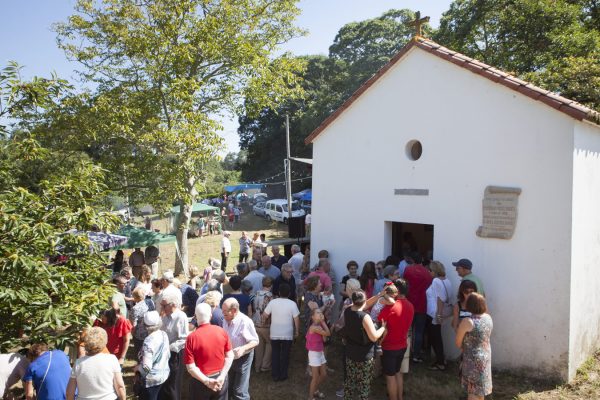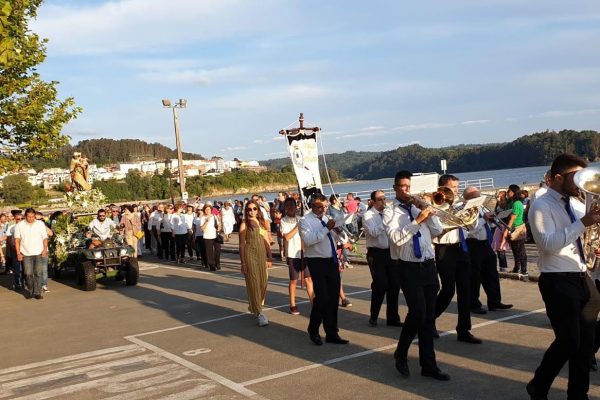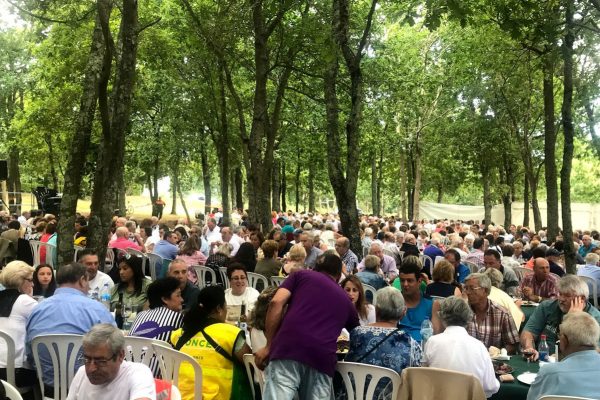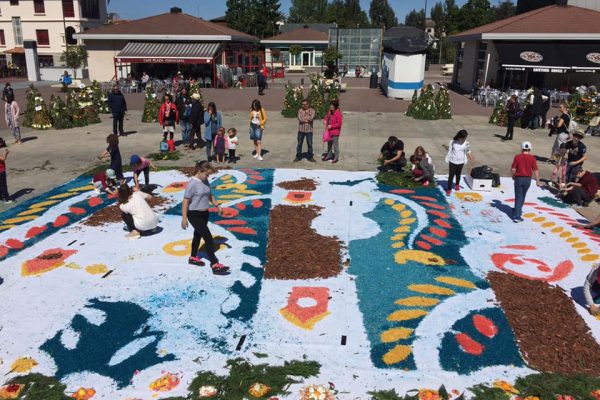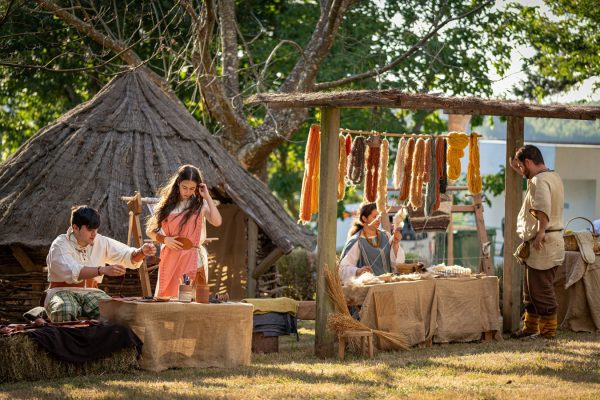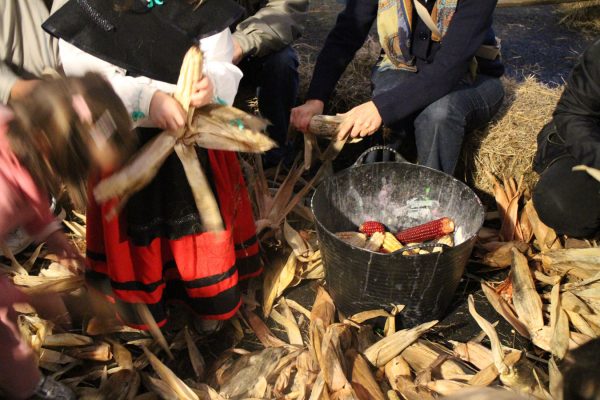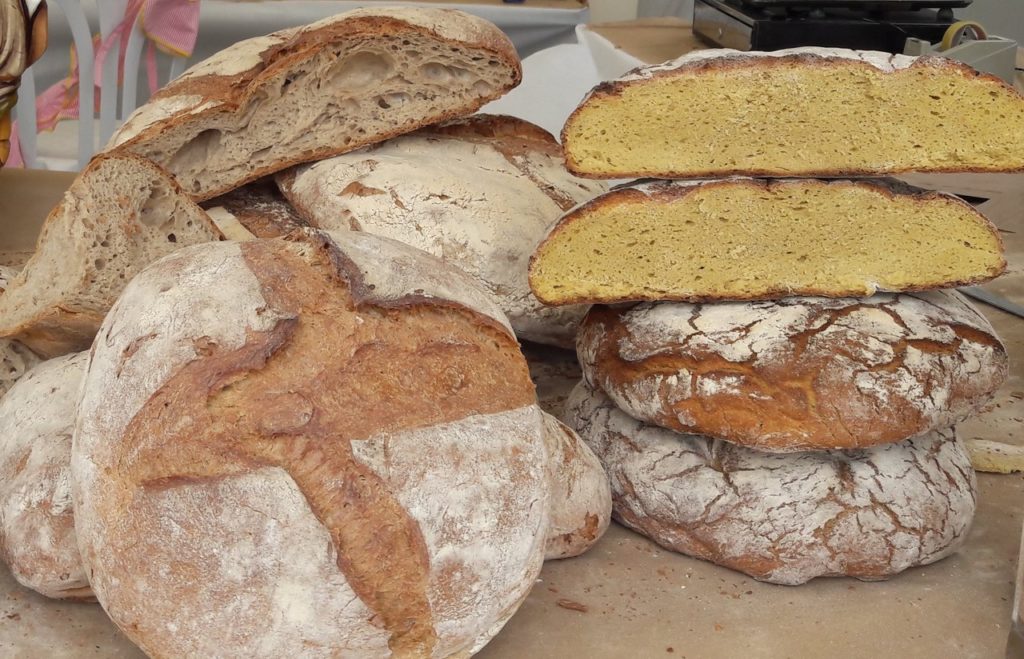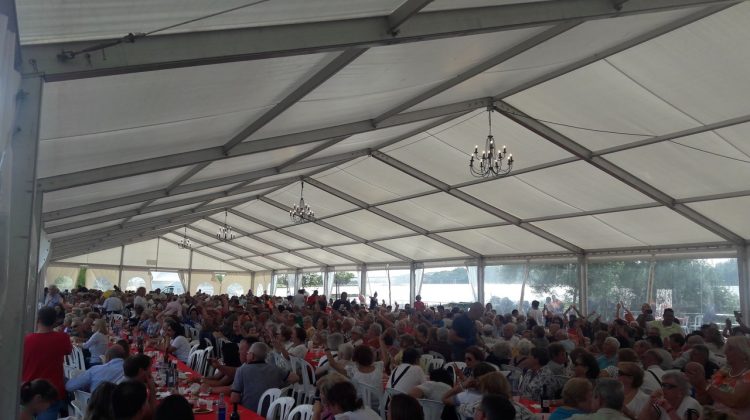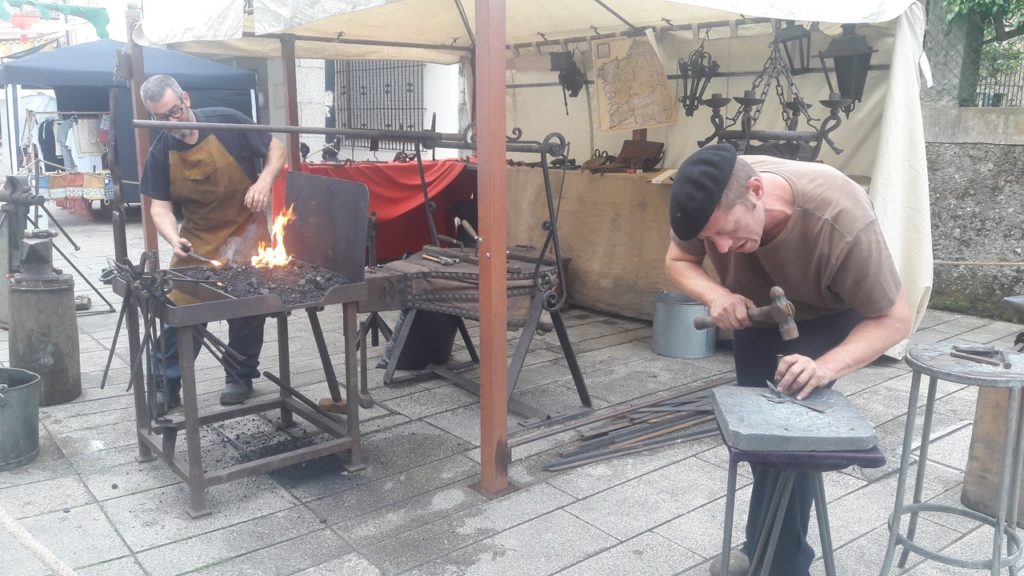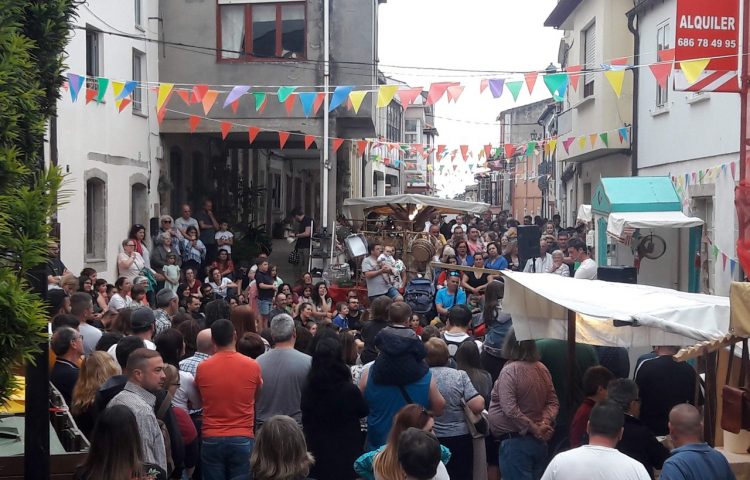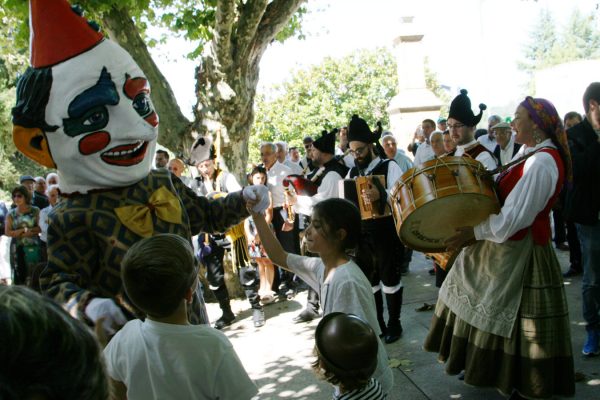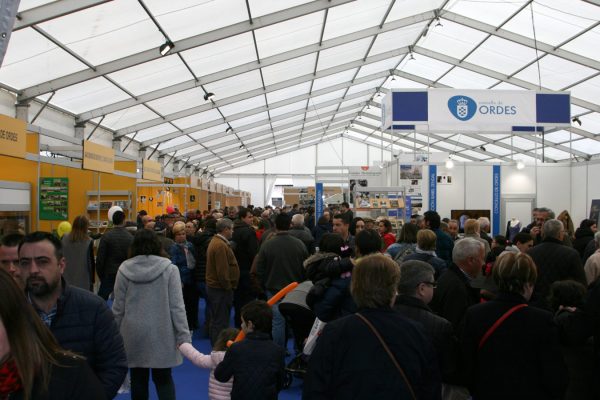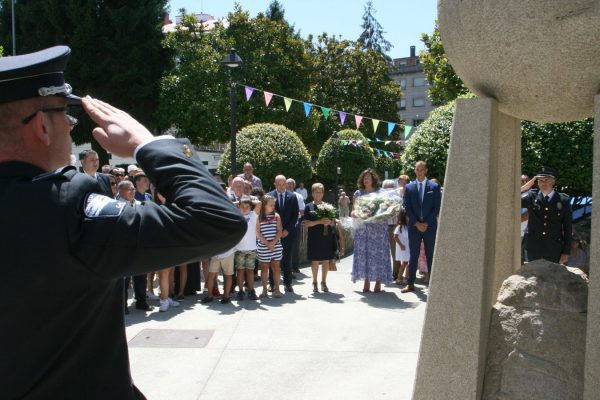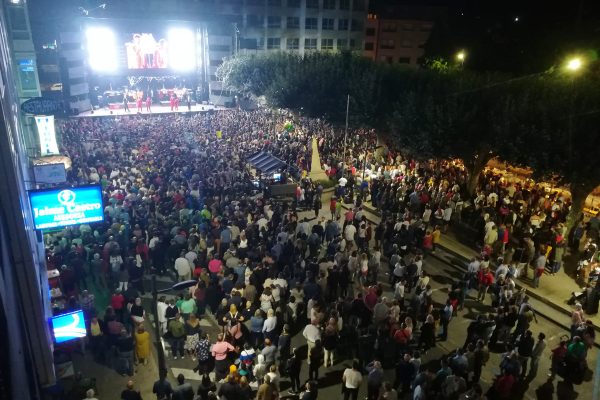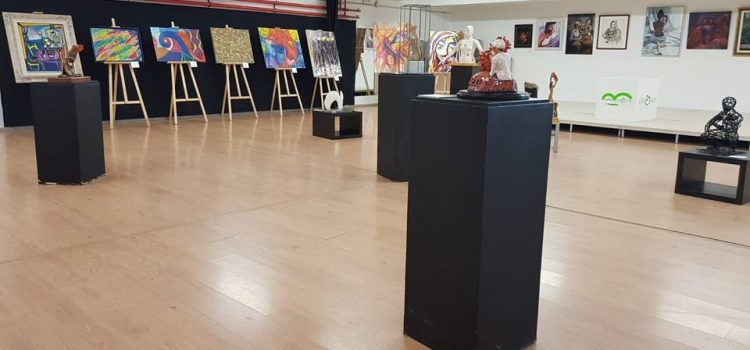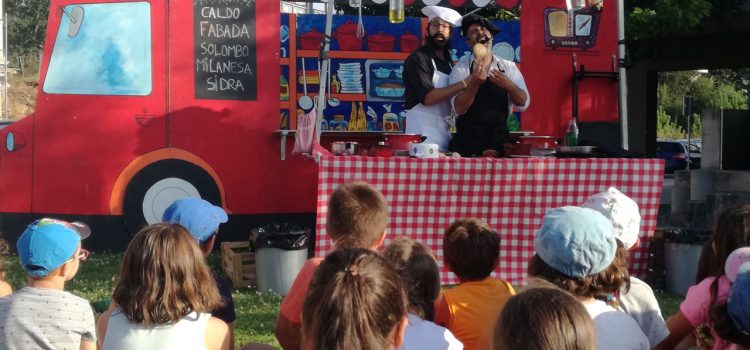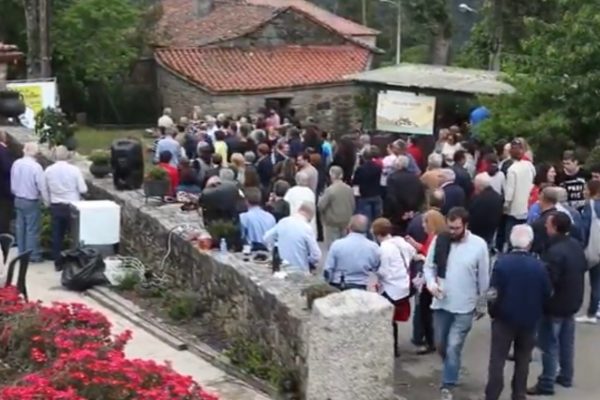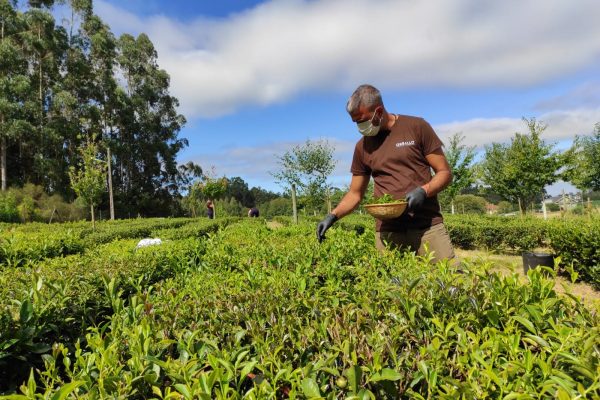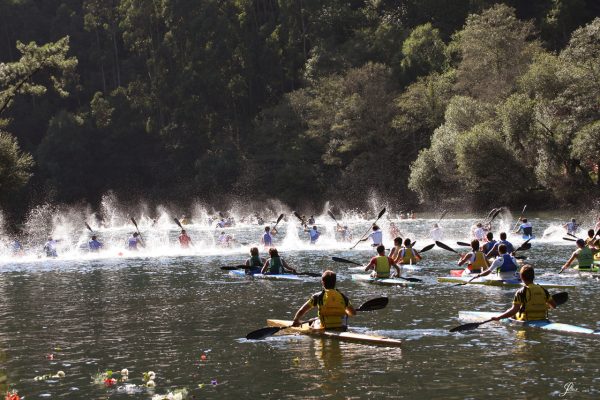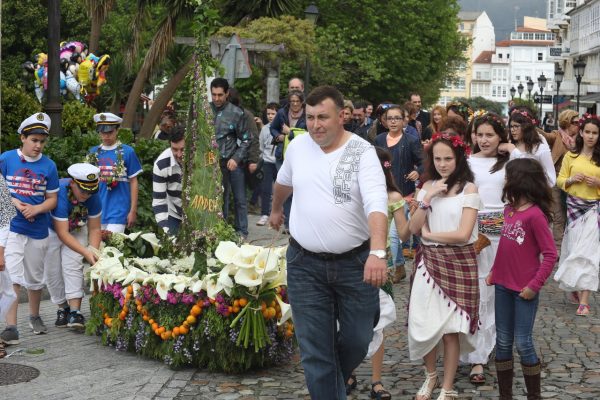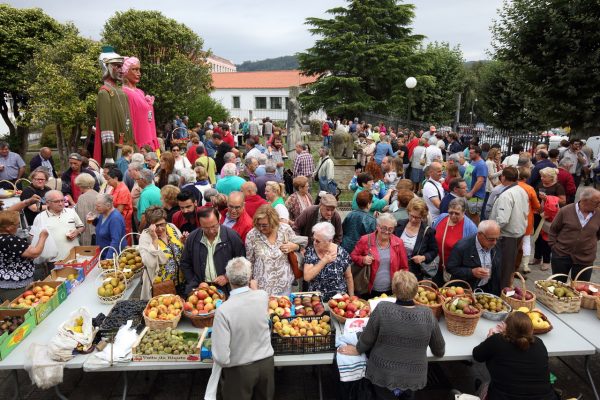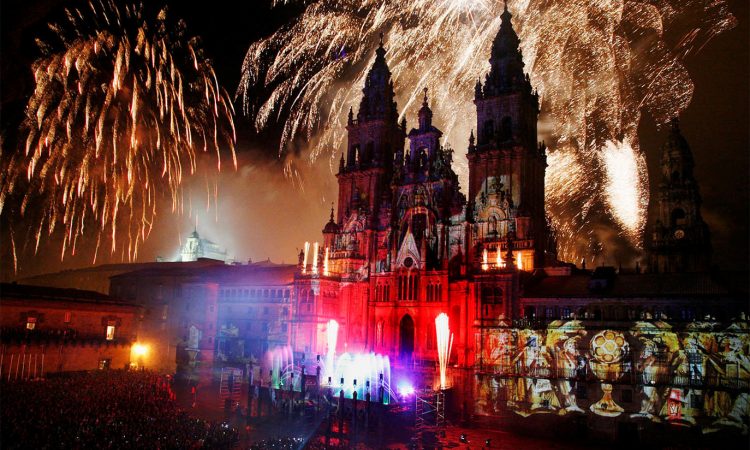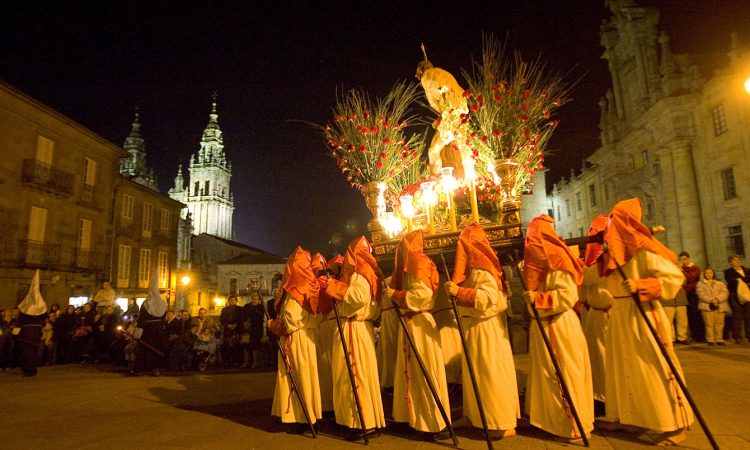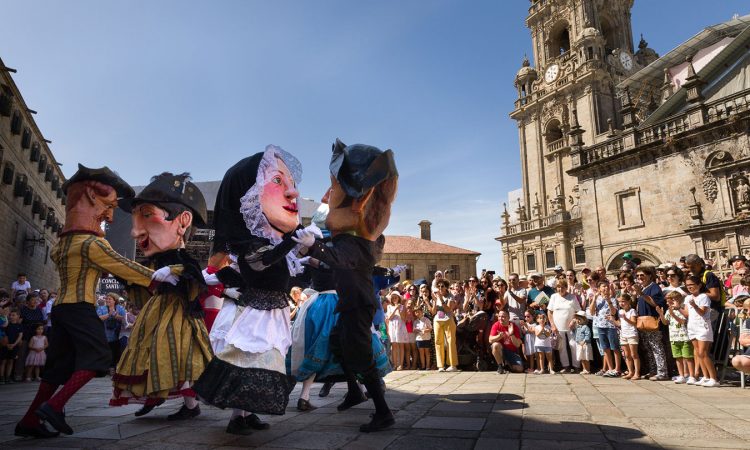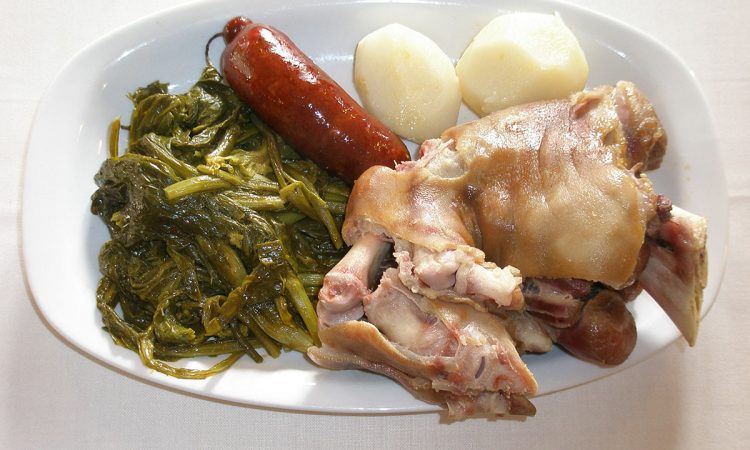Entertainment on the Camino Inglés
What can we do along the Camino Inglés? Throughout your journey you will find a wide variety of cultural and leisure activities.
Os eventos e entretemento dos camiños que nos levan a Santiago de Compostela salpican os municipios coas súas pequenas aldeas, sempre dispostas a facilitar o traxecto aos peregrinos que se aventuran por estas terras.
Here we present the festas dos municipios que van conformando o Camiño Inglés, which over time have become more popular among travellers who embark on it every year and who visit these lands of natural landscapes day after day, helping to make the Camino more enjoyable. This route represents a huge social, economic and cultural impulse for the region.
Summer is an ideal time to enjoy these festivals and events. Although the weather is sometimes changeable, most days are usually sunny and the nights are very pleasant, perfect for enjoying and getting to know the cultural and gastronomic traditions of each village.
Most Galician villages and towns celebrate their patron saints at this time of year, so it is the perfect opportunity to savour the local food, enjoy the music and the joy in the air! Here is a selection of the traditional festivals that you will find if you are doing the Camino de Santiago.
Remember to check if they are still happening before setting off. At this time of Covid-19 – they may be subject to change.
A Coruña
San Xoán: Classified as a ‘Festival of interest for International Tourists’, it is especially loved by the people of A Coruña to celebrate the summer solstice. Although it is mainly celebrated on the night of 23-24 June, the events last for several days. The whole city takes to the streets, there are bonfires in all the neighbourhoods, but it is on the beaches of Riazor and Orzán where the greatest number of people gather.
Festival Noroeste A Coruña: Fiestas de María Pita and Noroeste Pop Rock: The city pays homage to the local heroine throughout the month of August with a very extensive programme of festivities: musical performances, leisure activities, comic theatre, comic fair, craft fair, book fair... It is worth mentioning the free concerts included in the Noroeste Pop Rock line-up, featuring some of the best of the Spain’s independent scene flooding the streets with eclectic sounds: pop, rock, indie, avant-garde, folk, fusion, hip hop, punk, etc.
Tapas Picadillo in Coruña: Picadillo Tapas: The ‘Picadillo Tapas Contest’ is usually held during the month of September. Following a route through many of the city's establishments you will be able to taste wonderful tapas in which innovation, tradition, creativity and the exaltation of raw materials converge…These gastronomic morsels will delight the palate!
Abegondo
Cherry Pilgrimage: In the parish of Vilacoba (or Vilacova), on the Ferrol section of the Amilladoiros Route. The Cherry Pilgrimage takes place on the first Sunday of July, with several masses throughout the morning in honour of San Paio. This pilgrimage is a centuries-old religious celebration in the municipality, which brings devotees from all over the region of As Mariñas to the valley of Vilacoba. San Paio is reputed to be very curative for bone ailments and for women's breast ailments. The offerings are placed at the feet of the saint with wax votive offerings that represent the part of the body that needs to be cured. For more than a decade, the committee organising the pilgrimage has been distributing cherries among the people who come to the site.
Pilgrimage of the Virgen de los Remedios: In the section of A Coruña, in the parish of Sarandós. The Virxe dos Remedios pilgrimage is held on the fourth Sunday in September in the parish of Sarandós, with masses throughout the morning. The Virxe dos Remedios has the reputation of being a very miraculous saint, who soon crossed the limits of the region of As Mariñas. At the bottom of the steps leading to the parish church we find the Fonte da Santa. According to the devotees, the water that flows from it has curative properties for a large number of ailments affecting the body and soul. Tradition goes that the pilgrims, after praying to the Virgin, must stay for lunch in the fields near the sanctuary.
Cultural Route of the Amilladoiros: The route that pilgrims come across in the parish of Leiro and that, without deviating from the Camino Inglés (they resume at the Beche Reservoir), they can experience and participate in the tribute that the path makes to the so-called amilladoiros (heritage elements made of stone that pilgrims accumulated). Precisely because of its historical relevance, the Xunta de Galicia has qualified it as a cultural route, as it houses in its route heritage assets and natural areas of relevance to the area, as is the case of the chapel and the fountain of San Paio.
Betanzos
Festivities of San Roque: The 16th of August is a big day for Galicia, as many of its towns celebrate the festivity of San Roque, as is the case of Betanzos, whose festivities have been declared of National Tourist Interest. The most outstanding event is undoubtedly the traditional San Roque Balloon, a large paper balloon that crosses the night sky of Betanzos. Also worth seeing are Os Caneiros, a river walk along the Mandeo, brimming with decorated boats that transport the pilgrims upriver to enjoy an all-day festival in the countryside.
Omelette Week: Since 2007, this event has been held to promote and pay tribute to the star dish of Betanceira's gastronomy: the Spanish omelette. During this week many restaurants compete to choose who makes the best omelette. The winner of this famous competition represents Betanzos in the national potato omelette contest, an event in which this small town has won on several occasions.
Pincho Week:: The Betanzos hospitality industry show off their know-how, innovation and hard work in this contest that takes place at the beginning of December. It is a great way of getting to know the different gastronomic dishes of the town.
Medieval Fair: This takes place on the second Sunday in July and offers an entertaining journey through time. During the fair the whole of the old quarter becomes an authentic medieval town, with lots of craft stalls, period activities and a wide variety of musical and theatrical performances.
Balconadas: In 1988 the 1st Balconadas Painting Biennial was held in Betanzos. From the outset, this activity, which turned the city into an exhibition hall, intended to bring pictorial art closer to the people. With the aim of fusing painting and architecture, the Balconadas Painting Biennial is held in Betanzos every year.
Cabanas
Wool Spinning: This exhibition aims to promote the artisan production and spinning thanks to the work of the Rural Women's Association. This event is a meeting point in which to learn and share knowledge about the whole process — from initial preparation, the washing and traditional spinning — through to the elaboration of the final product.
Pilgrimage of Santa Marta (29th July): If this day falls on a Saturday or Sunday, it is held on the same weekend. If it falls on a weekday, it is held on the following weekend. It is one of the main festivities in the region with a variety of activities for everyone.
Carral
Carral Bread Festival: Held on a weekend in May, promoting the main gastronomic product of Carral and recognised throughout Galicia. The festivities consist of the sale of bread-related products, musical performances, recreational attractions, workshops for children and various artistic and fun events for all ages.
Festivities of Socorro: These are the patron saint festivities of Carral, dedicated to the Virgen del Socorro (8th September). They are the most popular of the parish festivals of the municipality and always feature large orchestras, attractions and cultural activities. The festivities end with the Burning of the Pantheon – a large fireworks display that is famous throughout the region.
Fene
Romería del Pote: This is one of the pioneering pilgrimages in Galicia and has been celebrated since 1933. It has a special feature that sets it apart from the rest: its secular nature. The picnics are another of the curiosities of this pilgrimage in which, during the afternoons prior to the festival, the young people of the area begin to build huts with gorse and other plants in the vicinity of the O Pote site, preparing for the big day.
Ferrol
Holy Week: The Easter Week tradition in Ferrol, declared ‘Of International Tourist Interest’ in 2014, dates back to the 18th century. For nine days there are more than twenty processions, liturgical acts of the brotherhoods, exhibitions and cultural events that attract thousands of visitors every year.
Event of the artists of the Meninas: The first weekend of September the people of Ferrol exalt their urban art through the well-known Meninas de Canido, in the neighbourhood of the same name. Music, gastronomy and a wide variety of workshops accompany this celebration, in which new Meninas are painted and those works that have been damaged over time are restored.
Mesía
San Cristóbal: This celebration takes place during the second weekend of July in the parish of Mesía, which gives its name to the town council, although the town hall is located in Xanceda.
The special feature of this festival is the vehicles parade, especially trucks, which make the journey adorned with flowers and flags. People stand on pavement to see them and catch the candies that are thrown in their path. Upon arriving at the church, the appropriate blessing is made and afterwards the party continues with the verbena and a picnic under the tents that the event organiser puts up.
San Bartolomé: This festival is held on the 24th and 25th of August, and is important in this municipality as Xanceda is the most central parish and also houses the town hall and the Casa de la Cultura among other important places. For all these reasons, it is usually more crowded than other parish festivals. In addition to the mass and the verbena, it has a pilgrimage where people go to eat in the countryside, especially in the recreational area of A Mata, where the municipal swimming pool is located.
Foliada das Mentiras de Mesía: Festival de las Mentiras: A gathering of traditional music and dance in the town hall square held at the end of August and beginning of September, organised by the Mesía traditional music and dance association, where the participating groups come from neighbouring municipalities and others further afield. The aim is to highlight the value of our culture through music. The public actively participates in the event and there are a variety of tapas donated by bakeries, cheese factories and volunteers.
Miño
The Flat onion Festival:
A classic gastronomic festival held during the first weekend of August, whose main objective is to enhance the value of a highly appreciated local produce in the Galician market. In addition to the flat onion, a great variety of produces from Galicia are also praised.
There are a series of activities aimed at all audiences, among which the demonstrations of traditional crafts, music, entertainment and the different Galician food stalls stand out.
Pilgrimage of San Ramón:
This is the most important country festival in the municipality, with more than 150 years of history. It is held every 31st August in Bra, in the parish of Sombreu. The most eagerly awaited and well-known moment is the "Posta do Santo", which is performed each year by a local resident who has to recite a traditional prayer that is handed down from father to son.
After the religious ceremonies, the fiesta begins with music and a traditional picnic.
Feast of San Pedro:
The celebrations dedicated to San Pedro, patron saint of Miño last approximately 4 days, the most important days being the 28th and 29th of June.
In these festivities, which end with a fireworks display, the liturgical acts coexist with the entertainment in which music, parades and open-air dances bring together a multitude of locals every year.
Festa do Carmen:
On July 15th the festivities begin with a procession with the image of the Virgin that leaves from the parish church of Santa María to the port, where a sung mass is celebrated. A laurel wreath is then thrown into the sea in memory of the deceased sailors. Once the ceremony is over, the Virgin is taken in procession back to the church, and then the music and festivities begin.
Narón
O Couto Pepper Festival: Since 2010, the ‘O Couto Pepper’ has protected geographical origin status and is a real delicacy. For this reason, every July hundreds of people gather annually in the area of A Picota, in the parish of O Couto, to participate in the events that are programmed for the gastronomic celebration of the Pimiento de O Couto festival. It even has an Order of Ladies and Gentlemen of the Pimiento de O Couto, which plays a fundamental role in this event.
Mayos: In many Galician towns the arrival of spring is celebrated with the pagan festival of the Mayos (Os Maios). This is also celebrated by the people of Narón, who make their own constructions or "mayos", with flowers, vegetation, fruits and handcrafted elements. Conical or pyramidal structures are usually used, although creativity pervades the production of these structures, which are mostly mobile, to facilitate their transport and "procession" with popular chants.
Oenach Atlántic: Declared a ‘Festival of Tourist Interest’ by the Xunta de Galicia in 2014, the Oenach Atlántico recreates in August the Celtic way of life in the Feria del Trece, in Sedes. The involvement of the local people in the celebration of this event is very important, making their own costumes and preparing, months in advance, the workshops for leather working, wood turning, clay, bread making, wool weaving, among others. Traditional games and music are also part of the programme of this renowned festival.
Legends of Pena Molexa: The neighbourhood of the parish of O Val is known for staging a play next to the Vilasuso castro. Coinciding with the summer solstice, on the night of San Juan they stage two legends: the legends of Pena Molexa, where evening magical spells are cast. History and archaeological heritage are the focus of this cultural and festive event, which includes gastronomic sampling, music and popular games. This celebration is complemented by a series of events that take place over several days.
A Esfolla: In September, with the arrival of autumn and the harvesting of the maize, the parish of Doso gives way to the recreation of traditional corn husking. The parish's neighbours, dressed in early 20th century clothes, recall those times when large areas of corn were cultivated and everyone got together to help in the tasks of defoliation, leaving the grain to then be picked off the ears of corn.
Neda
Neda Bread Feast: Declared of Touristic Interest in Galicia, Neda celebrates its Bread Festival on the first Sunday of September. An event where the highlights are the star product of its gastronomy and the booming artisan bakery industry. The promenade of Neda serves as an incomparable setting for an emblematic festival that unites tradition, gastronomy and culture. This is a must on the calendar of this Autonomous Community.
Santa María Festivities: The town of Neda celebrates its traditional patron saint festivities in honor of Santa María on September 8th, 9th and 10th. Festivities where the religious liturgy and the verbena go hand in hand, especially for the first two days. The program of events includes the launch of palenque bombs, a mass and fiesta in honor of the Patron Saint. The last day is traditionally dedicated to children with games and attractions laid on.
Fair on the Camino of St. James: Neda welcomes summer with the Fair on the Way of St. James. During the month of June, the old city (a ‘must-visit’ on the Jacobean route to Compostela) turns back the clock to travel to medieval times and recover the crafts, period costume and the traditional market. All this accompanied by a wide range of cultural activities and an endless entertainment.
St. Nicholas Mondays: The devotion to St. Nicholas has a special relevance in Neda the whole year: the so-called Mondays of Saint Nicholas. Coming from all over the region the parishioners, according to tradition, must make a pilgrimage three Mondays in a row to have the favour of the saint. San Nicholas bread buns are also distributed at the end of the Mass on the day of his festivity, which is December 6.
Ordes
Desordes Creativos: This festival is held every year in Ordes and transforms old disused or abandoned spaces into new places full of life and colour. It features a large selection of artists from the Galician, national and international scene, who turn Ordes into a large open-air public museum. The Desórdenes Sonoros is also part of this framework, where the avant-garde of Galician urban and electronic music meets and where other events such as live painting, a vermouth tasting or a guided tour of the most outstanding murals of the town take place.
Mushroom Festival: The Ordes mushroom festival is a gastronomic event held every year on the last weekend of April, as part of the programme of the Expo Ordes Multi-sector and Agricultural Machinery Fair.
During the event, in the different establishments of Ordes, you can taste multiple recipes that have mushrooms as the main ingredient. During the weekend there are also different exhibitions, shows and performances by local groups.
Feast of the Lacón con Grelos de Mesón do Vento: Recently declared a Feast of Tourist Interest, it has been celebrated in Mesón do Vento since 1999, so it already enjoys an important tradition.
In addition to the gastronomic section, this celebration usually hosts numerous activities such as the Agro-ecological Fair, samples of native livestock and poultry, as well as various folkloric gatherings.
Santa María patron saint festivities: The Ordes Town Council celebrates its patron saint festivities in honour of Santa María and San Roque on 15th and 16th August. Attendees can enjoy various musical performances and participate in the liturgical acts programmed for the occasion, as well as the traditional offering to the emigrant that has been held for almost 40 years and which serves to pay tribute to all the Galician emigrants.
Oroso
Trout Festival: Declared a Galician Festival of Interest to Tourists, it first started in 1996, normally during the first or second weekend of May. It has everything: trout tasting, multi-genre musical performances, crafts, sport, culture and entertainment for all.
There is a fishing contest for adults and children. The bars, cafés and restaurants of the town council collaborate with the event and most will serve trout for you to sample.
Culture Week: This is held at the end of August with an open-air programme of different cultural genres and open to all audiences: theatre, music, puppets, magic, workshops and outdoor water activities.
The event is spread throughout the area and both in the Parque do Carboeiro and in the Alameda de Gois it coincides with the route of the Camino Inglés. The Sacramento and the verbena are also celebrated.
Gois-Oroso Arte Competition: Generally during the month of September, since 2007 the works of various local and Portuguese artists are exhibited from the Portuguese twin town of Góis.
The event is free of charge for the general public and is held in the Centro Cultural Fernando de Casas y Novoa, at Calle de la Cultura, Sigüeiro, Oroso.
Paderne
Legitimate White Wine Exhibition:
In the first weekend of July the "Mostra do Branco Lexítimo" is held in Paderne. In 1914 García de los Salmones mentions the name "Legitimate White" for the first time in an official document.
The Town Council of Paderne, the birthplace of the Legitimate White wine, is managing to place these wines in a prominent position by appearing in prestigious publications such as the Parker Guide or the Paadín Guide, important names in the world of wine.
At the Show, which brings together the wineries producing this variety, the Paderne Town Council presents a showcase of quality, respectful of the philosophy of the Biosphere Reserve territory and a promoter of an important economic value for the whole area and a reference for the region.
Paderne, "paradise between rivers", always welcomes all visitors in this event with pride, for it has become a reference in the sector and in addition to the Legitimate White, it offers much entertainment for all ages, young and old.
The whole family can enjoy touring the different wineries, attending tastings or talks by specialists on the subject, tasting local products, attending various workshops or taking part in the shows organised in the village of Esperela.
Pontedeume
Fiestas de las Peras: The patron saint fiestas of As Peras are held in honour of San Nicolás de Tolentino and the Virgen de las Virtudes between the 7th and 11th of September. Among the most outstanding traditions in this celebration are the departure of the ‘mómaros’, the maritime ‘cucaña’, the fruit competition, the naval firework combat and the ‘xira’ to the river Eume.
Pilgrimage of San Miguel de Breamo: It is celebrated in the surroundings of the hermitage of San Miguel de Breamo and takes place on May 8th and September 29th. The inhabitants of Pontedeume walk up from the centre of the town, adding to this tradition by walking nine times around the chapel to ward off the "evil eye".
Medieval Fair of the Andrade: The Feirón Medieval dos Andrade is celebrated the first weekend of July. This celebration evokes the Middle Ages and the history of Pontedeume in the times of the Andrade family.
The Descent of the Eume: In the world of canoeing – this is considered one of the best races!
Santiago de Compostela
Fiestas of the Apostle St. James: The celebrations dedicated to the Apostle, patron saint of Santiago, of Galicia, and of the whole of Spain, last approximately fifteen days. These festivities combine religious and official solemnity with popular flavour and entertainment, turning the whole city into one big party!
The 24th and 25th of July are the big days. On the night of the 24th there is an impressive fireworks display in honour of the Apostle, while the huge pyrotechnic castle imitating the Gothic façade of the Cathedral is set alight.
During this fortnight the cultural activities stand out for their quality and diversity. Santiago de Compostela is taken over by music of all styles, dance and theatre, parades, open-air dances... The traditional meeting of bands from all over Galicia and exhibitions of regional costumes and folk dances are other present in these festivities, which come to an end on 31st July with another fireworks display.
Holy Week: Holy Week is an eminently religious celebration. With a long tradition throughout Spain, it evokes the death and resurrection of Christ and all the events are centred on remembering these historical-religious events. Easter Week in Santiago de Compostela comprises more than a week of events, including processions, liturgical acts and concerts of sacred and ancient music.
Holy Week is at its most colourful during the processions. With medieval origins, the processions have survived to the present day as a sign of popular religiosity, but also as a great tourist and cultural attraction. In many cases, the dramatic Passion of Jesus Christ, according to the Gospels, is represented in these processions with images of important saints, which are carried in procession. The processions are organised by the cofradías (confraternities), a religious version of the old guilds. In Santiago, there are currently 13 confraternities, including a very characteristic student confraternity.
Throughout these days, interesting concerts of sacred and ancient music are held in various churches in the monumental area at dusk.
Festivities of the Ascension: The festivities of the Ascension, the second most important in the city after those of the Apostle St. James, are celebrated on a variable date on the sixth Thursday after Easter. These festivities, which last for about a week, are one of the most popular in the city, both for the cultural and recreational events they include, and for the participation of university students before the final stretch of the end-of-year exams.
Romería de San Lázaro: Gastronomic Feast of the Uña (pig’s trotters).
Between mid-March and early April. The pilgrimage of San Lázaro, a neighbourhood located at the entrance to the city on the Camino de Santiago, is of both religious and gastronomic nature. The saint is honoured with a mass and procession. Then comes the tradition of a very ancient pilgrimage that still celebrates the auction of parts of the pig as an offering to the saint. The culinary part is therefore based on pig's trotters accompanied by ‘bertóns or xenos’. As in all celebrations of this sort, there is also a verbena (street party)!

